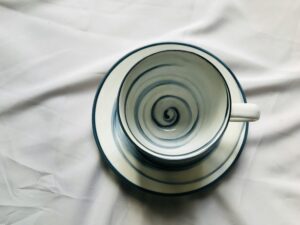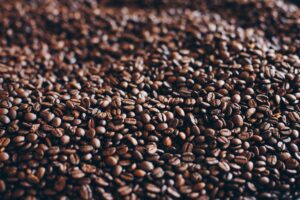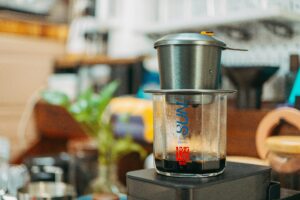Imagine stepping into a coffee shop and seeing a menu filled with exotic names—single-origin, espresso blends, light roast, dark roast. But have you ever wondered what truly sets different coffee beans apart? The answer often comes down to Arabica and Robusta, the two dominant species of coffee beans that fuel our caffeine obsession.
Table of Contents
These two coffee giants are responsible for nearly all the coffee consumed worldwide, but their differences go beyond just taste. Understanding them can help you choose the perfect coffee that suits your preference, budget, and even health goals.
The Taste Showdown: Why Arabica is Smooth and Robusta is Bold
The biggest difference between Arabica and Robusta lies in flavor. Have you ever noticed how some coffees taste smooth and slightly sweet, while others have a strong, bitter kick? That’s Arabica vs. Robusta in action.
- Arabica: Known for its smooth, mild, and slightly sweet taste, Arabica beans often have hints of chocolate, fruit, and nuts. They have a higher acidity, which gives them a more complex and layered flavor.
- Robusta: If you’ve ever had a strong, bold, and bitter cup of coffee, chances are it was made with Robusta beans. These beans have an earthy, woody taste, sometimes with nutty or even smoky undertones.
🔹 Fun Fact: Arabica beans contain about 60% more lipids (natural oils) than Robusta, which is why they taste smoother and less harsh.
Caffeine Clash: Which Bean Packs More Energy and Why?
If you drink coffee for the caffeine kick, then you need to pay attention to this key difference:
- Robusta beans contain nearly twice the caffeine of Arabica beans!
- Arabica beans typically have 1.2–1.5% caffeine, while Robusta beans contain 2.2–2.7% caffeine.
This higher caffeine content makes Robusta the go-to bean for strong espressos and instant coffee brands. However, too much caffeine can lead to bitterness, which is why high-end coffee brands often prefer Arabica for its balance of flavor and caffeine.
🔹 Did You Know? The higher caffeine content in Robusta beans makes them more resistant to pests and diseases, which is why they are easier to grow and often cheaper than Arabica.
From Farm to Cup: How Growing Conditions Shape Flavor and Quality
The environments where Arabica and Robusta are grown play a significant role in their flavor profiles and price.
- Arabica beans are high-maintenance. They grow best at higher altitudes (600–2,000 meters), require cool temperatures, and take longer to mature. This makes them more delicate, expensive, and of higher quality. Countries like Colombia, Ethiopia, and Brazil are known for producing some of the world’s best Arabica beans.
- Robusta beans are tough and resilient. They grow at lower altitudes (0–800 meters), can handle warmer temperatures, and thrive even in harsh conditions. Major Robusta-producing countries include Vietnam, Indonesia, and parts of Africa.
🔹 Interesting Fact: Vietnam is the world’s largest producer of Robusta coffee, making it a powerhouse in the instant coffee industry.
Which One is Right for You? Choosing Between Arabica and Robusta Like a Coffee Pro
Now that you know the differences, which coffee should you choose? Here’s a quick guide based on your preferences:
- If you love smooth, aromatic, and slightly sweet coffee → Choose Arabica.
- If you prefer a strong, bold, and caffeine-packed brew → Go for Robusta.
- If you want a budget-friendly option for espresso or instant coffee → Robusta is the better choice.
- If you enjoy high-quality, specialty coffee → Arabica is the gold standard.
🔹 Pro Tip: Many coffee blends mix Arabica and Robusta to balance flavor and strength—so don’t be afraid to experiment!
Final Thoughts: The Best Bean for the Best Brew
At the end of the day, coffee is deeply personal. Whether you prefer the smoothness of Arabica or the bold strength of Robusta, knowing their differences helps you make better coffee choices. Next time you buy coffee, check the label—you might be surprised at what you’ve been drinking!






